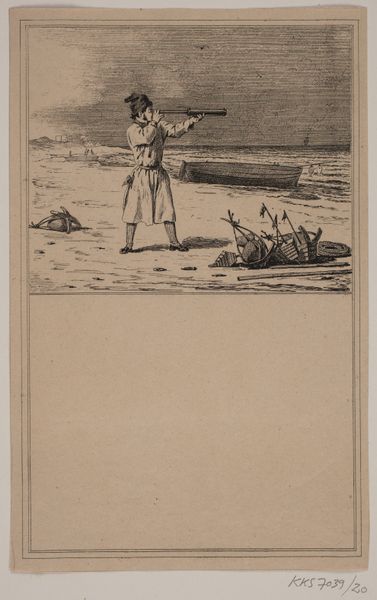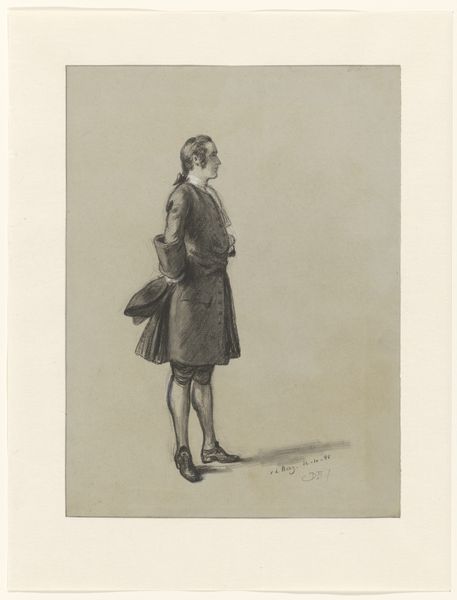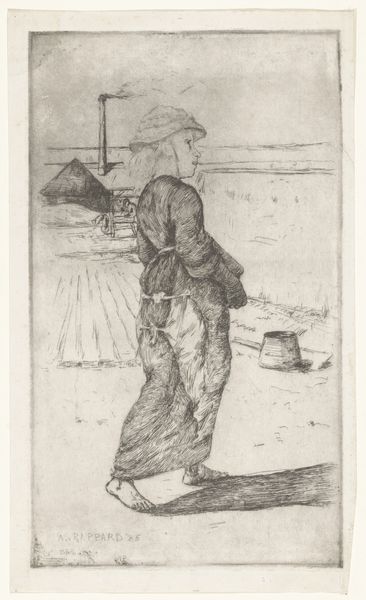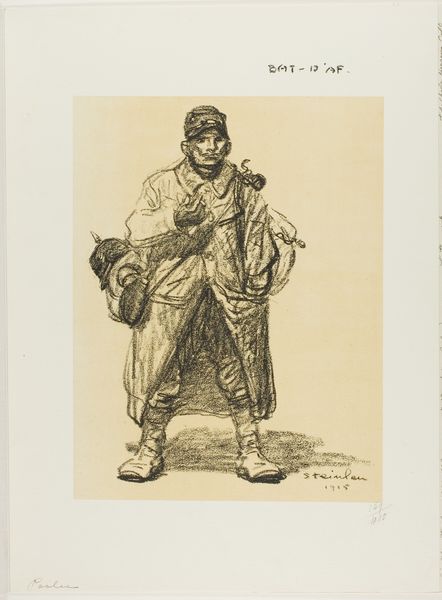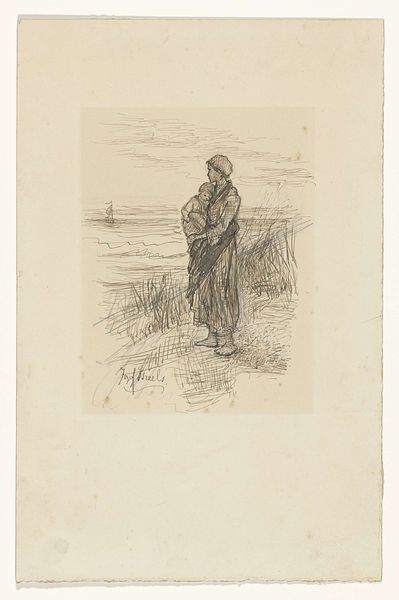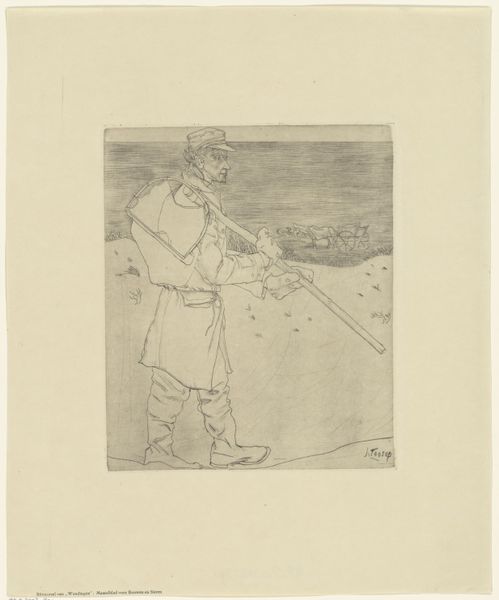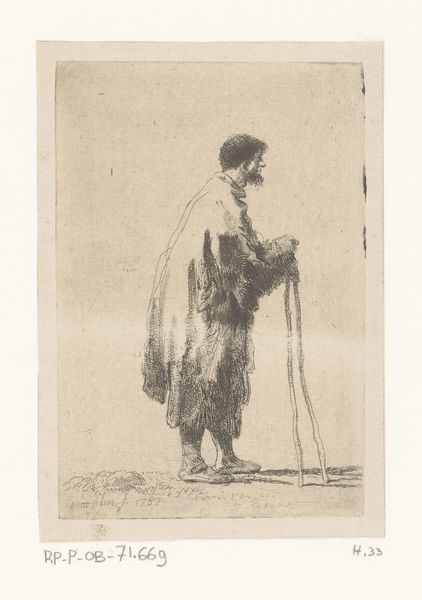
print, etching
#
portrait
# print
#
etching
#
figuration
#
coloured pencil
#
japonisme
Dimensions: Sheet: 14 3/8 × 11 3/4 in. (36.5 × 29.8 cm) Plate: 10 15/16 × 7 11/16 in. (27.8 × 19.5 cm)
Copyright: Public Domain
Editor: Here we have "The Japonese Woman," an etching by Etienne-Prosper Berne-Bellecour, from 1877. It feels very dreamlike. What layers of meaning can we find here? Curator: It’s crucial to acknowledge Japonisme, a European art movement heavily influenced by Japanese art and design. But let's consider the inherent power dynamics. How does portraying a “Japanese Woman” through a European lens affect her representation and agency? Editor: It makes me think about the Western gaze, exoticism, and maybe even fetishization? Curator: Exactly. And consider the broader social context: this piece emerges during a period of intense colonial expansion. Are these artistic representations entangled with colonial narratives and power structures? How do the chosen composition and printing method impact the experience, reinforcing or challenging such problematic ideas? Editor: The woman is facing away; it feels a little like a barrier for us to see past what the artist shows us. Curator: It does limit our perspective, doesn't it? This restriction speaks volumes. What if Berne-Bellecour wanted to critique the consumption of an exoticized view? Could his artistic choices highlight the objectification inherent in Japonisme? How does the artwork invite you to reflect on your own position as a viewer within this history of representation and cross-cultural interaction? Editor: I guess it encourages a deeper level of reflection beyond just aesthetics. I hadn't thought of that before! Curator: Indeed. It’s about interrogating the systems that shaped the art and continue to influence our interpretations of identity and culture. Editor: So much to consider! This deeper investigation really enriches the viewing experience.
Comments
No comments
Be the first to comment and join the conversation on the ultimate creative platform.
